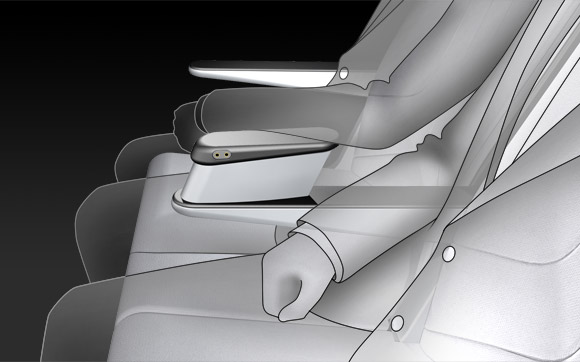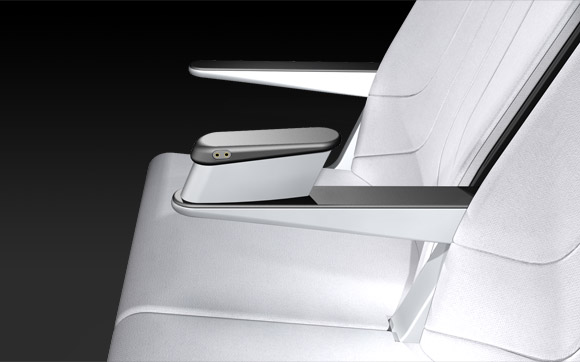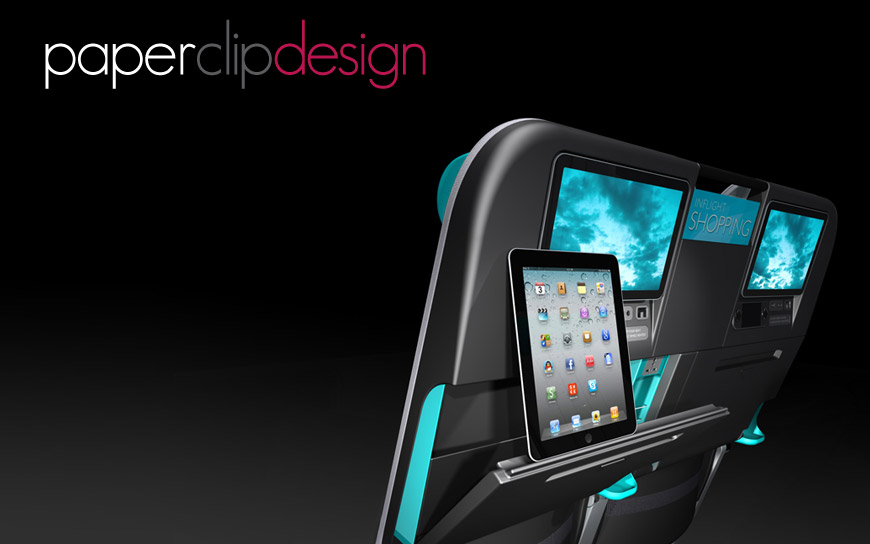
MEERKAT SEAT CONCEPT
The Meerkat is a concept design for long haul economy class seating that enhances passenger experience while minimising weight and maintenance costs.
Passengers today are far more focused on comfort. However, airlines need to balance costs with fancy facilities. Weight reduction is especially critical since it has a direct bearing on the amount of fuel consumed particularly on long flights.
The Meerkat seeks to satisfy both sides. It introduces a number of innovative features with minimal weight and complexity. The Meerkat is a seat for passengers as well as a seat for airlines.
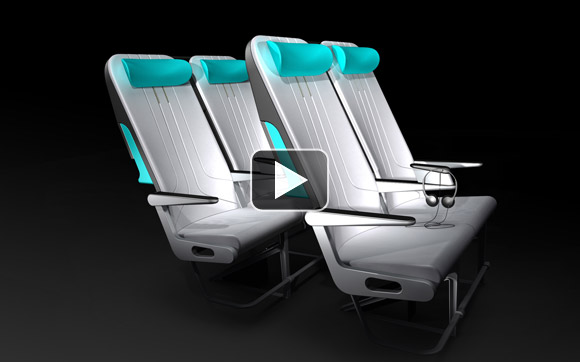
3D WALK-THROUGH
Click on the image on the left to watch a three-dimensional virtual tour of the seat on Youtube for a quick introduction.
Alternatively you can simply scroll down to learn about the many unique features of the Meerkat Seat Concept.
If you are unable to access Youtube, a YOUKU version is available here.
SLEEPER BACKREST
The Meerkat offers an alternative to the traditional recliner mode to allow passengers to nap or sleep.
The lower portion of the backrest cushion detaches to allow items like a bag to be stored behind, pushing the backrest forward to provide a deep recline for relaxation. A bonus is that a bag is stored safely behind your back rather than cluttering up the space around your feet.
The effectively shortened seat pan allows passengers to stretch their legs out underneath the seat in front, making full use of available space.
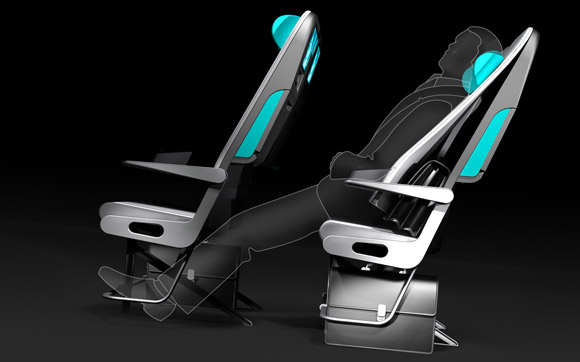
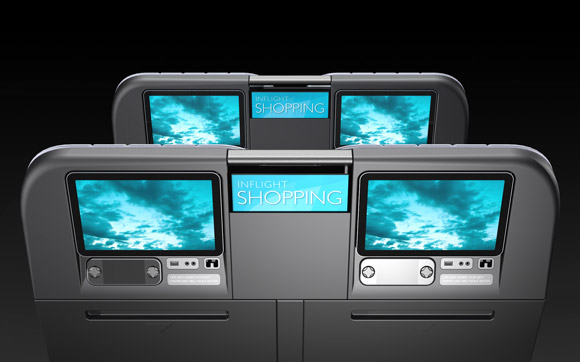
SHARED LITERATURE RACK
Inflight magazines are not utilised as much as other forms of inflight entertainments – so there is no need for one magazine, entertainment guide and shopping catalogue for every single passenger.
A shared literature rack between every two seats presents airlines with the opportunity to reduce inflight magazine weight by up to 50%, or 33% for triple seats, thus saving fuel consumption.
HEADPHONE HOOK
When passengers leave their seat to visit the lavatory or stretch their legs, what to do with a plugged-in headset? Many a passenger ends up sitting on the headset or getting the wires tangled around themselves when they return.
The plug of Meerkat's headset is shaped so that it forms a hook when plugged into the audio socket- the headset can be simply hung on to it when not in use. The hook does not require extra components, and because the headset itself forms the hook, there is no protruding matter when it is unplugged so it is safe and comfortable.
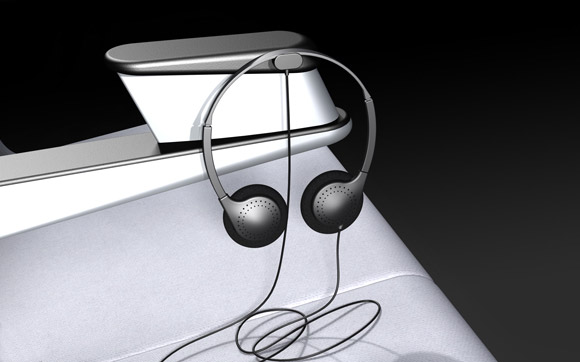

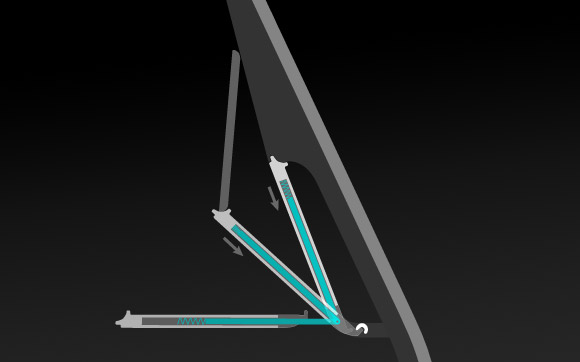


TABLET STAND
This simple mechanism locks the Meerkat’s table at the half-open position to support an iPad, tablet, e-reader or even a traditional book.
The two lips of the table’s edge form a trough that holds the device securely. Passengers can view their device or book comfortably without having to hold it.
This feature requires no additional components, thus adds no extra weight to the aircraft, and will not suffer from malfunctions.
FIXED CUP HOLDER
A cut-out on a corner of the tray table allows a fixed cup holder to be installed directly on the seatback, eliminating delicate mechanisms that are often a maintenance headache for engineers, and thus reduces maintenance cost.
To passengers’ advantage is the fact that the recessed position does not obstruct access to seats when in use.
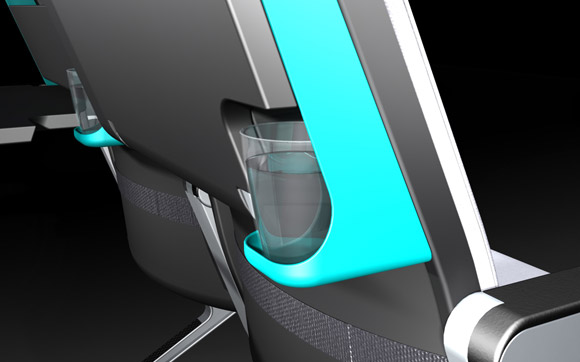
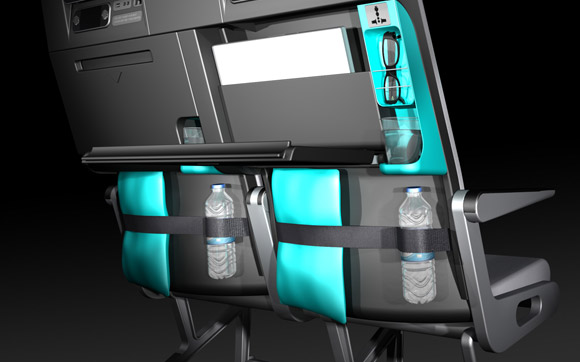
PERSONAL CABINET
A personal cabinet positioned behind the stowed tray table replaces the seat pocket, so as to maximise passengers’ knee room.
In place of the original seat pocket is a simple flexible strap that can hold bulky items such as pillows, blankets, or a water bottle.
IFE BOX FOOTREST
Seat legs and the under-seat electronics box are aligned to form surfaces that can be used as footrests. This weight-free and maintenance-free solution provides passengers with some form of foot support. Traditional fold-out footrests are increasingly being phased out by airlines to save on costs and maintenance, but it is a feature that many passengers find enhances their comfort.
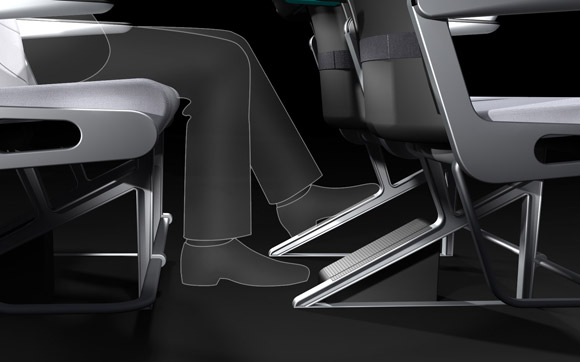
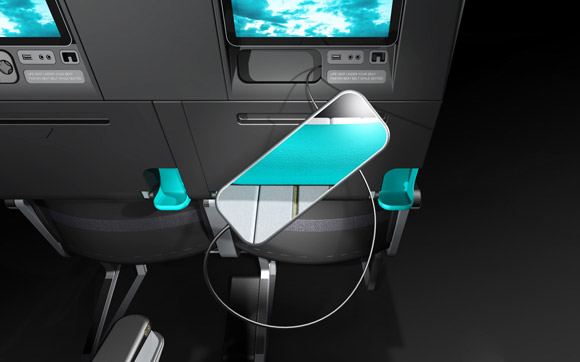
VANITY MIRROR
The Meerkat’s vanity mirror piggybacks on the reverse of the inflight entertainment control handset. This provides maximum flexibility when in use, and can be securely stowed out of sight when not needed without the requirement for any components.
PAPERCLIP ARMREST
The patented dual-user Paperclip Armrest allows adjacent passengers to both use the armrest thanks to its two-level design. It also makes more efficient use of space by creating a few extra inches for passengers, as well as eliminating the “battle for the armrest” that is a major source of irritation and discomfort for many in economy class.
